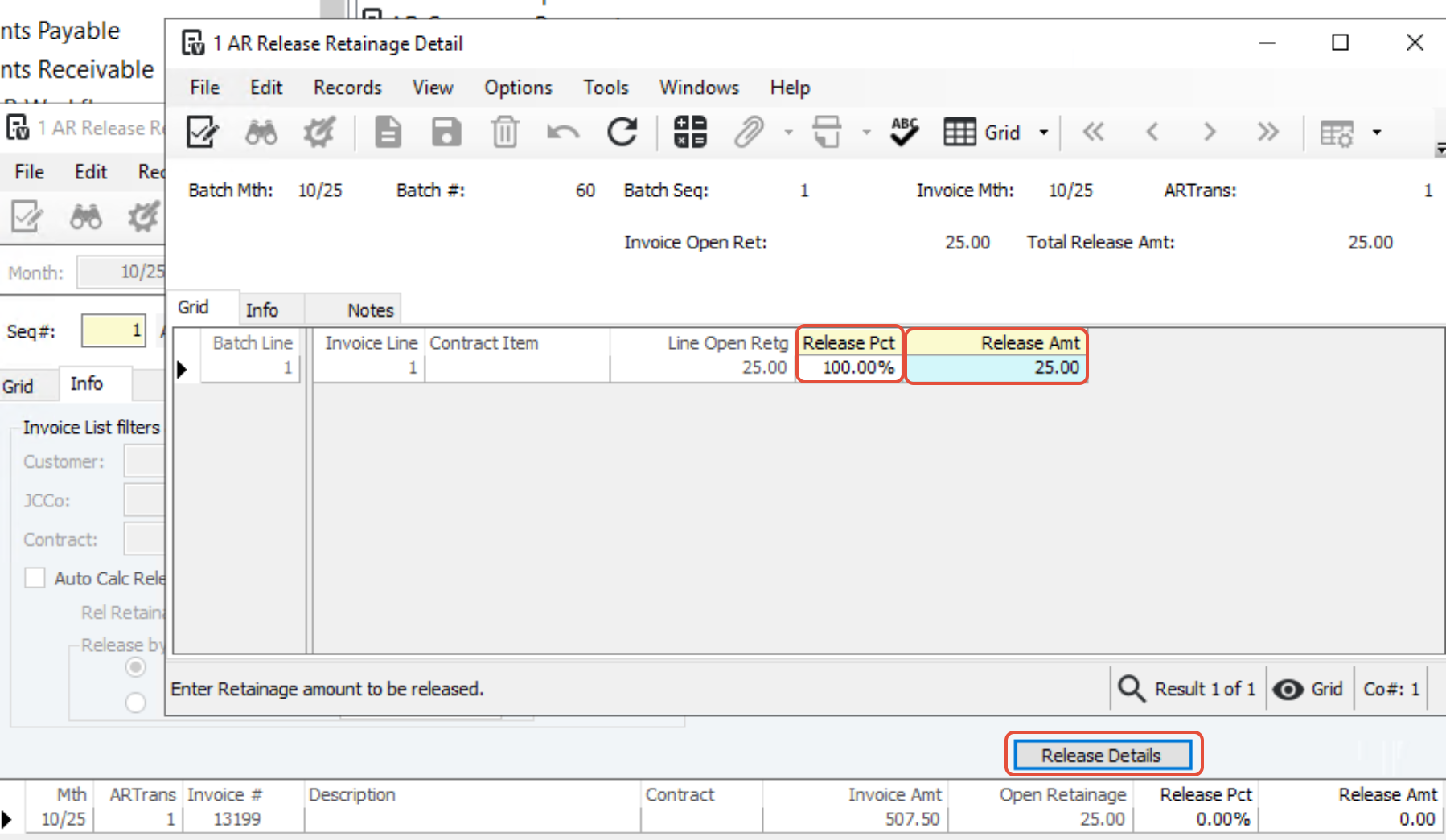The AR Release Retainage form is used to release retained amounts previously withheld from customer payments. Retainage can be released for all invoices related to a customer or a specific contract, provided that retainage was originally applied and has not been fully released or paid. Only invoices entered directly in Accounts Receivable (AR)—not those interfaced from Job Billing (JB)—are eligible.
Once a customer is selected, the system displays all related invoices, with options to filter by JC Company or Contract. Although retainage is applied at the item level, release actions occur at the invoice level, and the system automatically allocates released amounts to individual items.
Methods of Releasing Retainage
Manual Release:
After selecting filter criteria, users manually enter either a release percentage or a specific release amount per invoice.
Adjustments can be made at the item level through the Release Details option.

Automatic Release:
Users enable Auto Calculate Release Retainage, select a cutoff date, and choose one of two calculation methods:
Percentage Method: Applies a uniform release percentage to all invoices. The system distributes the released amount item by item until fully allocated.
Amount Method: Releases a specified total dollar amount, starting with the oldest invoice and proceeding until the total release amount is met.

System Actions After Release
A credit transaction is created for the total release amount, labeled as Release Retainage and linked to the original invoice lines.
The system generates a single AR invoice summarizing the released retainage, consolidating items where applicable.
Upon batch processing, the new invoice becomes available for printing through the AR Invoice Report.
In summary, the AR Release Retainage process automates or facilitates the manual release of retained funds, ensuring accurate allocation, documentation, and reporting within the AR system.
Was this article helpful?
That’s Great!
Thank you for your feedback
Sorry! We couldn't be helpful
Thank you for your feedback
Feedback sent
We appreciate your effort and will try to fix the article